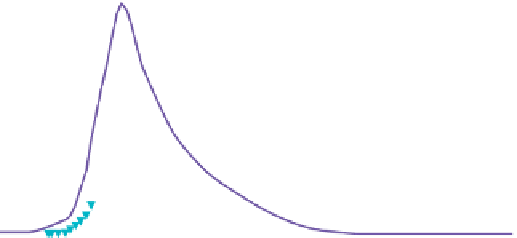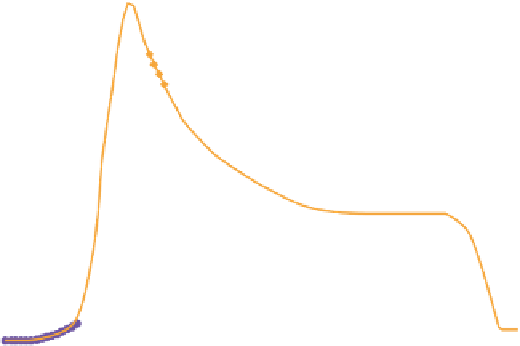Environmental Engineering Reference
In-Depth Information
FIGURE 8.6
Reconstructions
and projections of anthropogenic
P delivered to the oceans. (From
Filippelli 2008
.)
2.5
2.0
Total
1.5
1.0
Fertilizer
0.5
Deforestation + soil loss
Sewage
0.0
Year (AD)
with relatively advanced secondary treatment can remove as little as 10% of the P in
wastewater. Still others use biological or chemical treatment to remove up to 95% of the P.
Whatever the case, the resulting P (in bacterial biomass or in sludge) can be landfilled or
resold for use in fertilizer. In general, developed countries have more P removal than do
developing countries, but even in rich countries, not all P is removed at water treatment.
P removal from sewage has been associated with clear declines in soluble reactive P and
even total P in a number of lakes and rivers. For example, P concentration in a number of
rivers including the Thames and the Rhine have decreased to less than 50% of the maximum
values observed in the 1970s, coincident with changes in sewage treatment. Concentrations
are still high compared to most pristine watersheds because of high nonpoint loads that
persist. At present, the net balance of these reactions on the global scale is a tripling of the P
in rivers compared to preindustrial flows (
Bennett et al. 2001
).
The global influence of human action on P cycling raises questions about the amount of
change in global processes that can be accommodated while maintaining or improving
human well-being.
Rockstr
¨
m et al. (2009)
introduced the concept of planetary boundaries
to define a safe operating space for humanity on Earth. These boundaries are intended to
define key thresholds, critical values for one or more control variables that, if crossed, could
generate unacceptable environmental change on Earth. They identified nine processes for
which planetary boundaries should be defined, including interference with the global P
cycle. These authors set the planetary boundary for P as the quantity of P flowing into the
oceans that would avoid major ocean anoxic events for over 1000 years, or about 11 million
tonnes of P per year entering the oceans. Recent reexamination of the planetary boundary
for P based on maintaining freshwater systems in a noneutrophic state indicates that we
have already gone beyond acceptable levels of P in terms of input to freshwater systems,
input to soils, and overall mass in soils (
Carpenter and Bennett 2011
). We address possible









































































